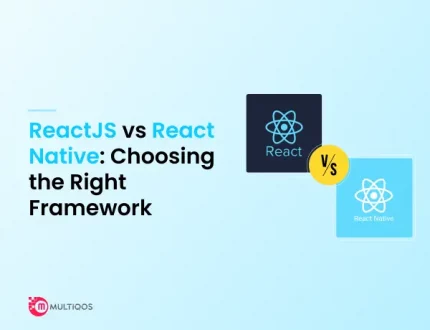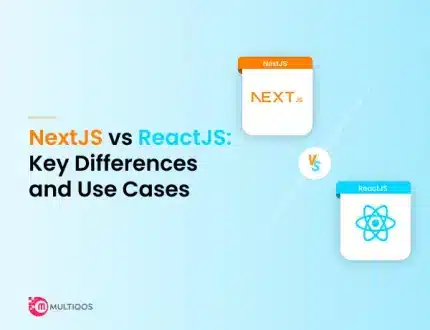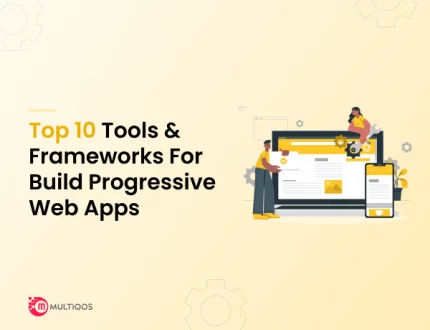Leading Front-End Technology To Choose In 2023 – [Updated]
![Leading Front-End Technology To Choose In 2023 – [Updated]](https://multiqos.com/blogs/wp-content/uploads/2021/03/front-end-technology-blog.jpg)
Table of Contents
User experience (UX) remains the most important priority for any enterprise solution. This is why any web or app developer while starting with the idea of an app project first needs to plan for ease of use, simplicity, faster loading time and effortless navigation and accessibility.
Almost all leading apps offer user experiences that clearly became part of their popular brand. So, delivering a great user experience actually means serious business and one needs to plan for the technology stack and resources accordingly. Well, the right mobile app development company will always suggest you the ideal choice of frontend technology to leverage the maximum benefit of user experience.
What are the best frontend frameworks and technologies that can guarantee the most sophisticated user experience? Well, here we are with our picks.
1. Flutter
Established by Google, Flutter comes as an open-source and cross-platform toolkit for frontend development. It provides developers pretty much everything to build responsive and beautiful user interfaces. Flutter is developed using Dart language which made it even more popular among developers because of the expressive and simple syntax. Flutter with its component-based cross platform development approach is particularly suitable for ambitious and small budget app projects.
Let’s have a brief look at the pros and cons of Flutter:
Pros
- To deliver a highly responsive and visually engaging UI, Flutter offers a variety of widgets. This also ensures great compatibility for cross-platform app projects.
- Because of the Hot reload feature, developers are capable of making faster changes in application code and monitor the outcomes in actual time.
- Flutter allows developers to build both web and mobile apps across different OS platforms with the same codebase.
- Thanks to the minimum mediation between the app and the device platform, Flutter guarantees optimum performance.
Cons
- Flutter is still a young entrant in the frontend development scene and so has a limited volume of web projects and developers have used the framework.
- The size of the flutter is relatively bigger and this can be a concern for apps willing to keep size lean and small.
Why To Choose Flutter?
The power and benefits of flutter in-app projects mainly correspond to the low budget cross-platform development. Business startups with a shoestring budget find Flutter appropriate to deliver high-performance apps along with sophisticated user-centric design.
2. React
React is regarded as one of the leading JavaScript frameworks with exceptional component-based architecture and modular development approaches. Created and maintained by Facebook React as an open-source development framework easily stands out from the rest because of several unique features and capabilities. The virtual Document Object Model (DOM) of React helps developers to build feature-rich apps with great scalability and an array of advanced features.
Here we go explaining the pros and cons of React:
Pros
- React is actually a large library loaded with reusable components allowing fast-paced modular development.
- React offers apps a consistent and seamless performance because of the virtual DOM.
- React allows easy writing of components without incorporating classes and thus reduces the learning curve significantly.
- It fits both large and small budget startup apps and offers a large repository of development tools addressing every feature requirement.
Cons
- React is known for too many updates released continuously and this makes the framework documentation difficult and thus the learning curve at times can be steep as well.
- There are too many who find it extremely difficult to start with React just in the beginning. It takes time in comprehending the complexities of JSX in detail.
- The ability of React is limited to only frontend development and for backend development, you always need other technologies.
Why To Choose React?
React is ideal for high-quality single-page applications with custom UI and flexible features because of its modular development approach. When you have to build a performance savvy cross-platform app at a faster pace and within a stringent budget the reusable components of React can just make the job easier.
3. Angular
Angular is probably the most evolved front-end development framework and the only technology combining the power of both JavaScript and TypeScript programming languages. Unlike React, Angular provides developers two-way data binding feature helping in real-time syncing of the app model and the app view. Angular over the years has been used across a multitude of big-budget enterprise projects including that of Forbes, BMW, Xbox, and many others.
Here we are going to take a brief look at the pros and cons of Angular:
Pros
- Angular comes loaded with an array of inbuilt features such as two way data binding to ensure syncing between the model and view components.
- Angular reduces the code volume thanks to the two-way data binding feature.
- Angular helps segregate the app components from their dependencies.
- All Angular components are reusable and can be utilized across different OS versions.
- Angular offers a large global community of developers to ensure consistent support.
Cons
- Angular comes as a dynamic frontend development technology to help carry out tasks in different ways and this on the other hand creates a steeper learning curve.
- Angular because of its complex and multilayered structure at times reduces app speed and performance.
Why To Choose Angular?
Angular because of its dynamic features and capabilities is right for both multifaceted enterprise app projects and browser dependent web apps. Any app needing real time data syncing will find Angular appropriate because of its two-way data binding capability.
4. VueJS
VueJS has been a new entrant in the frontend development scenario and it gained quick popularity thanks to the simple, low-footprint and straightforward development approach. It comes with a very small APK size and offers pretty much everything to reduce the complexities of other frameworks. It actually brings together the best of both Angular and React such as the virtual DOM typical of React and the 2-way data binding common to Angular. On top of all of these, VueJS also offers a component-based modular architecture to help with cross-platform development using the same codebase.
Let’s take a look at the pros and cons of Vue:
Pros
- Vue delivers detailed and exhaustive documentation to help developers.
- Vue helps developers with a really simple syntax that any developer having with a javascript background can understand.
- Vue provides support for using Typescript for coding.
- All Angular components are reusable and can be utilized across different OS versions.
- Angular offers a large global community of developers to ensure consistent support.
Cons
- Many developers consider Vue components as less stable.
- Vue as the new and less popular framework compared to others has the backing of a relatively smaller developer community.
- The minds behind the creation of Vue come from non-English speaking backgrounds and many plugins are written in Chinese. This makes it challenging for developers from other countries to adopt Vue.
Why To Choose VueJS?
Vuejs is increasingly getting popular for flexible, scalable and user-focused front-end design and development. The most acclaimed thing about this framework is that it allows customization from scratch while still allowing developers to use reusable components for faster development.
Conclusion
In the space of frontend development, these technologies as of now remain the leading choices for most successful app projects. If you are undecided about making the right choice for your app frontend, just give this post a read to know the projects suitable for each of these frameworks.
We hope that these top 4 front-end development technology provide you with new perspectives on new technologies and how they might assist you, your project.
Furthermore, whether you need to outsource front-end development services or hire front-end developers, MultiQoS is always available. We transform your business with cutting-edge innovation, allowing you to connect your development with the best front-end development tools and build the future.
Let’s Create Big Stories Together
Mobile is in our nerves. We don’t just build apps, we create brand. Choosing us will be your best decision.
Get In Touch




